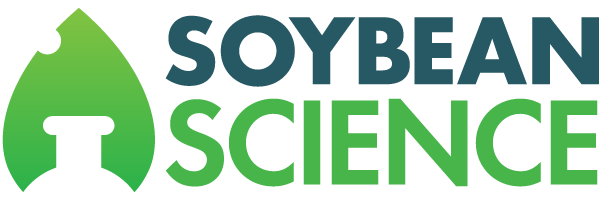Digestion & Nutrients
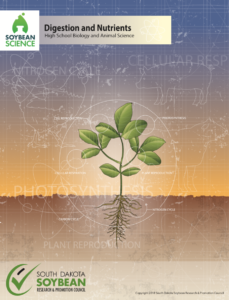 What's inside the unit:
What's inside the unit:
- Lesson 1: From Soybean to Nutrient (45 Minutes)
- Lab 1: The Breakdown of Food Into Nutrients (45 minutes)
- Lesson 2: From Nutrient to Animal Health and Body (40 minutes)
- Lab 2: The Absorption of Nutrients (90 minutes: Split between two days, needs to sit overnight)
- A Case Study on the Power of Protein (45 Minutes)
Photosynthesis and Cellular Respiration
 Intended Length:
Intended Length:
- Lesson Plan - 90 minutes or two 45 minute class periods
- Enrichment Lab - 60 minutes
Lesson Objectives: Students will be able to:
- List three elements involved in photosynthesis and cellular respiration
- Create a model of all molecules in photosynthesis and cellular respiration
- Create a diagram showing the relationship of photosynthesis and cellular respiration between plants and animals
Enrichment Lab Objectives: Students will be able to:
- Explain lab observations using an understanding of photosynthesis and cellular respiration.
- Compare inputs and outputs from cellular processes in light and dark lab settings.
Biodiesel - What's the Matter?
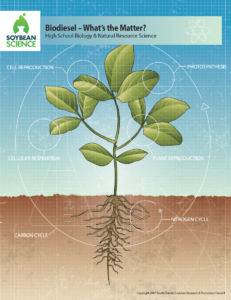 Intended Length:
Intended Length:
- Lesson Plan - 45 minute class period
- Enrichment Lab - Multiple days
- Day 1: Transesterification - 90 minutes to produce the biodiesel, Settle 2-24 hours
- Day 2: Separation & washing - 30 minutes, dry for 24-48 hours
- Day 3: Collection - 20 minutes
- Day 4: TestingBiodiesel - 45+ minutes
Lesson Objectives: Students will be able to:
- Create a diagram showing the relationship of photosynthesis and cellular respiration to oil production in a plant
- Link the concept of a calorie to both a food and fuel measurment of energy
- Model chemical breakdown of a fatty acid and understand the process of transesterification and the role in biodiesel
- Understand the advantages and disadvantages of using biodiesel as a fuel
Enrichment Lab Objectives: Students will be able to:
- Create biodiesel form soybean based oil
- Wash and purify the oil
- Test the properties of the oil, mainly calories available as carbon molecules combust, releasing CO2
Analyzing DNA
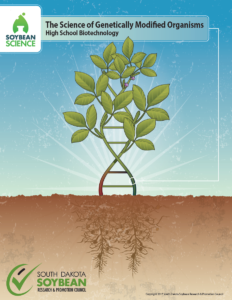 Intended Length:
Intended Length:
- Lesson Plan - 90 minutes
- Enrichment Lab - refer to instructions in selected kit
Objectives: Students will be able to:
- Explain the principles and purpose for laboratory methods used to analyze DNA
- Describe the processes for PCR and Gel Electrophoresis
DNA The Genetic Code
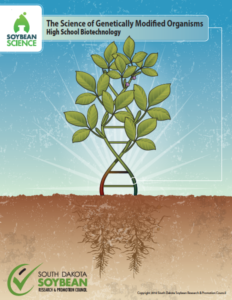 Intended Length:
Intended Length:
- Lesson Plan - 90 minutes or two 45 minute class periods
- Enrichment Lab - 45 minutes
Lesson Objectives: Students will be able to:
- Explain where to find DNA in a soybean plant (eukaryote)
- List the molecules that make up DNA and describe how the molecules connect to make a strand of DNA
- Calculate the size of one gene in comparison to an entire genome
Enrichment Lab Objectives: Students will be able to:
- Separate DNA from the rest of the cell and collect it
- Describe the appearance of DNA outside the cell
- Relate the location of DNA within a cell to the procedures for extracting it
DNA and Physical Expression
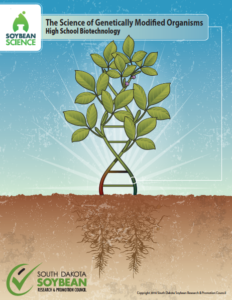 Intended Length:
Intended Length:
- Lesson Plan – 60 minutes plus a 20 minute reading and evaluation activity (Why Create a
GMO?) to be completed as homework or in class. - Enrichment Lab – 60 minutes plus additional daily observation time.
Lesson Objectives: Students will be able to:
- Describe the relationship of genes, genotype, phenotype, and physical expression
- Relate genes to protein synthesis and proteins to physical expression
- Explain what a Genetically Modified Organism (GMO) is and why humans use GMO technology
- Evaluate and discuss articles representing the pros and cons of GMOs
Enrichment Lab Objectives: Students will be able to:
- Utilize Scientific Method to:
• Ask questions
• Develop a hypothesis based on background information
• Write a procedure to test hypothesis and conduct the experiment
• Collect data
• Analyze data and draw conclusions - Communicate the effects of the EPSPS gene in soybeans based on evidence from their experiment
Transferring Genetic Material
 Intended Length:
Intended Length:
- Lesson Plan - 90 minutes or two 45 minute class periods
- Enrichment Lab – See kit or virtual lab suggestions & timelines
Lesson Objectives: Students will be able to:
- Communicate how a soybean plant can be genetically modified
- List and describe three methods of creating recombinant DNA
- Use a model to show the steps of genetic modification in a soybean plant using bacterial transformation
- Explain how biological processes use and pass on recombinant DNA from cell to cell and from generation to generation once it is in an organism
Enrichment Lab Objectives: Students will be able to:
1. See kit or virtual lab objectives
All our resources are free. We do ask you to provide some basic information to help us understand who is using our materials, and so that we may improve the quality of our resources for educators.
You only have to enter your information once. Thank you!!

